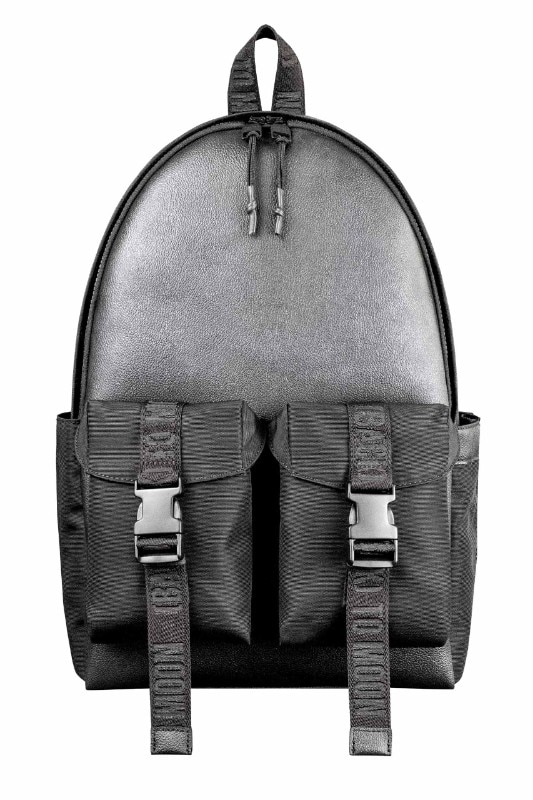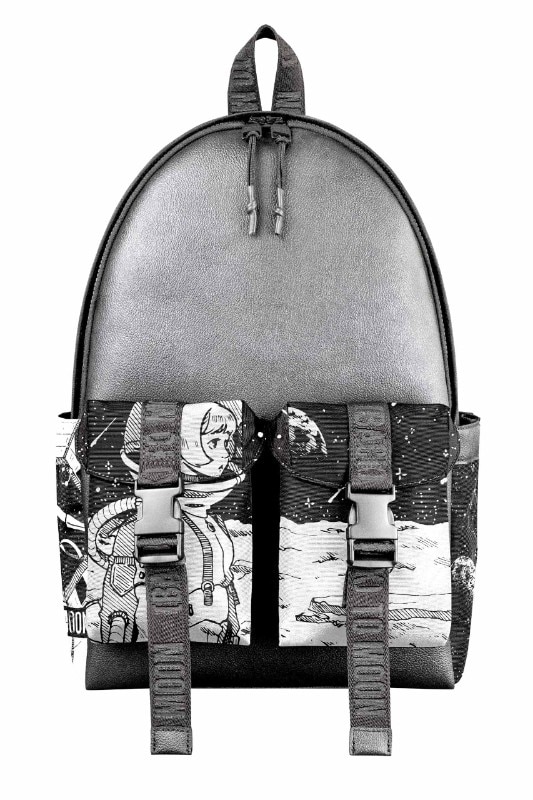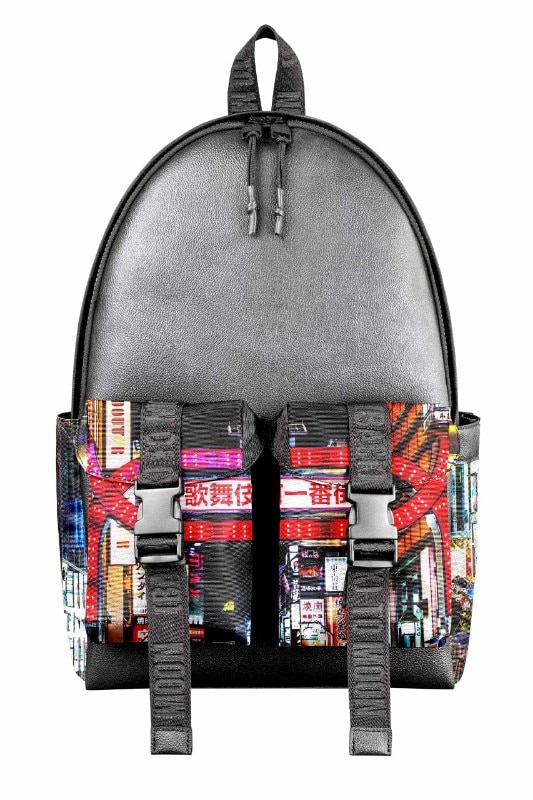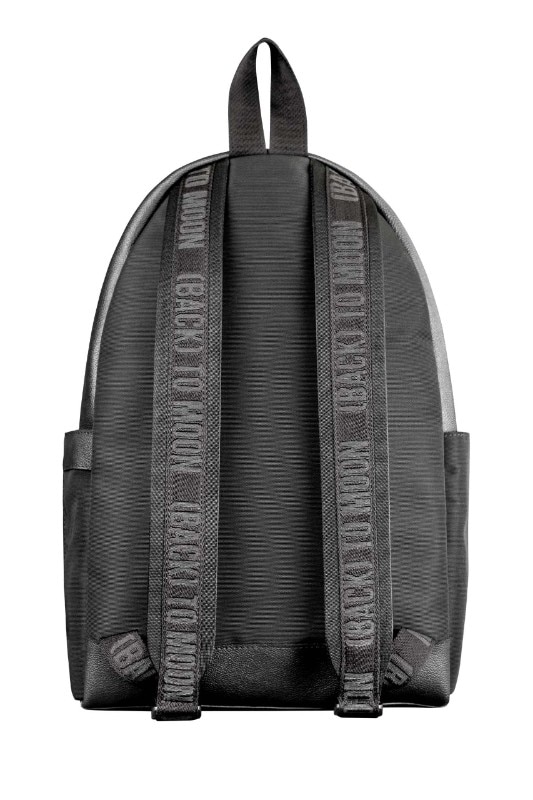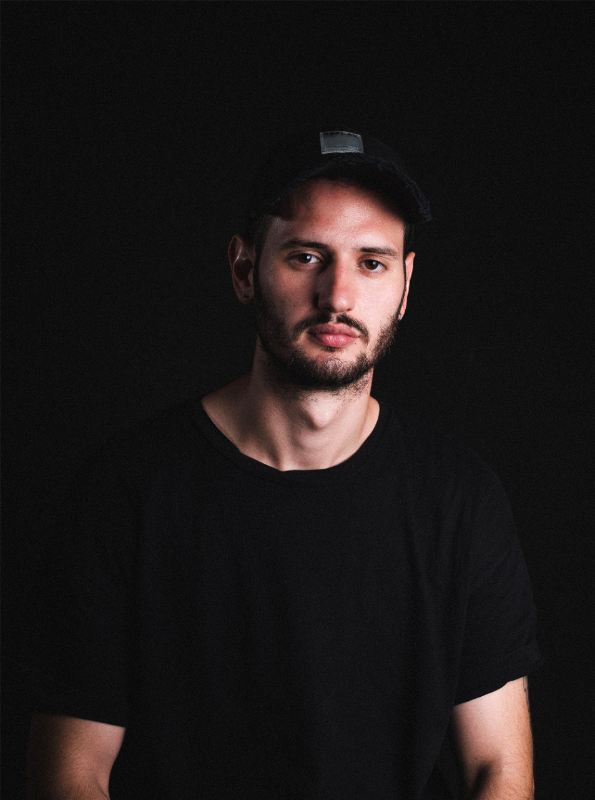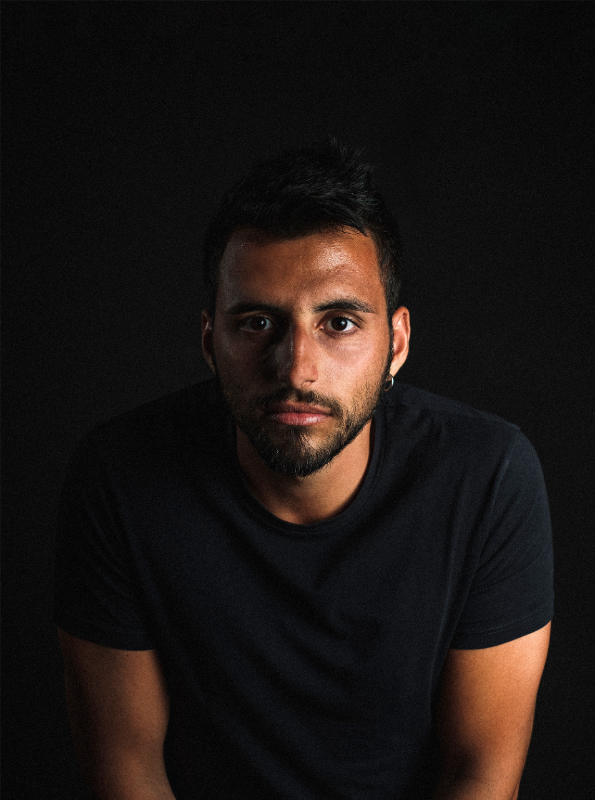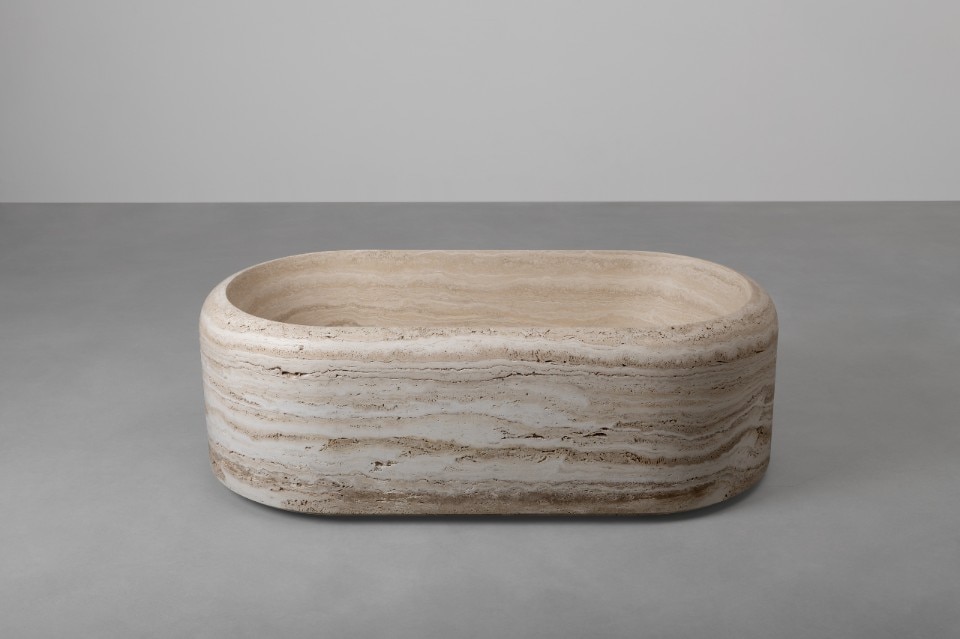The story of (Back) to Moon began a year and a half ago, when Manuel Altieri’s father, a leather craftsman with thirty years’ experience, showed his son Manuel and his friend Diego Anastasi a sample of CUMMIS, a material made from tyre waste. The two young men were about 25 years old at the time and had known each other for about ten years. Diego Anastasi had graduated in Economics and had worked in the Milanese transport company ATM and in the “Enterprises Factory” e-Novia. On the other hand, Altieri’s son, had not completed his studies in Graphics at NABA and in product design at Brera Academy.
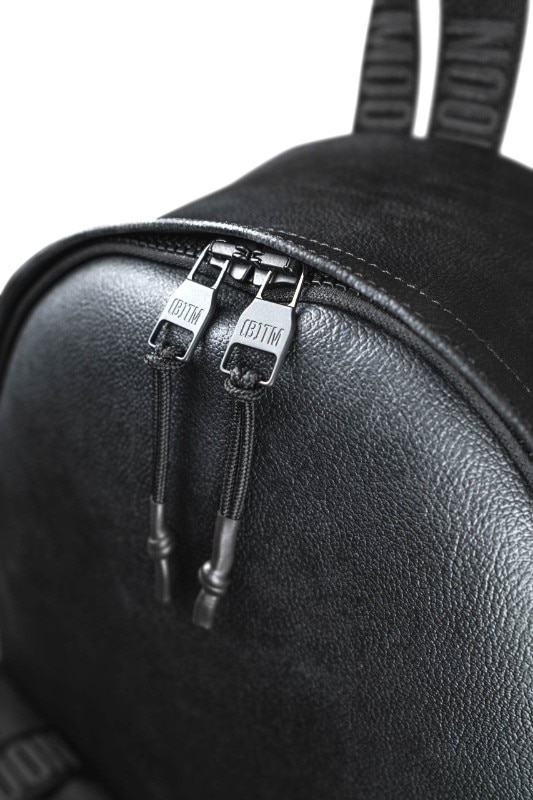
At the time they did not understand what that strange material was, “but we immediately recognised its exceptional quality in terms of strength, durability and manufacturing”, the two young men told Domus. They decided to use it to create a prototype backpack made of recycled materials only. “From the very beginning, we realised how difficult it is to work with this material, which requires a high level of skill and attention to detail at every stage of the production process”.
It's the product for our generation, in love with the minimalism of Apple products and streetwear style, but with important values that arise from the need to solve the problems of the past generations”.
(Back) to Moon as a brand was born when Altieri and Anastasi saw the finished backpack: a product that for them represents “a symbol of our generation”, they explain, “ready to solve the problems of the past generations and get involved to change our habits”.
Launching a start-up is a difficult challenge, on the one hand because of bureaucracy and costs, and on the other, as the two openly explain, because in Italy when you are young it is difficult to make yourself heard. “However, it becomes easier when you manage to spread the value of the product and the project you are pursuing”, they add.
For Diego Anastasi, the new professional adventure includes the added value of being able to work “without a boss telling you what you must and must not do” as well. A backpack as a symbol of freedom. To the moon. And financed out of their own pocket.
Manuel Altieri comes from a family linked to fashion: his grandfather made luxury clothes in Milan, and we have already mentioned his father. “At NABA, I learned branding, communication and Adobe software. At Brera Academy, I studied how to design products and the history of design”, he says.
“In my father’s company, I learned from our fashion designer how to design bags and backpacks”. Working on a new backpack, he explains, is always about finding a compromise. “Every time, the intention is to create a product that is functional, comfortable and beautiful”, but of course you already know that this will not be possible. “In this case, the use of recycled tyre instead of leather forced me to face several problems due to the specific processing techniques it requires”.
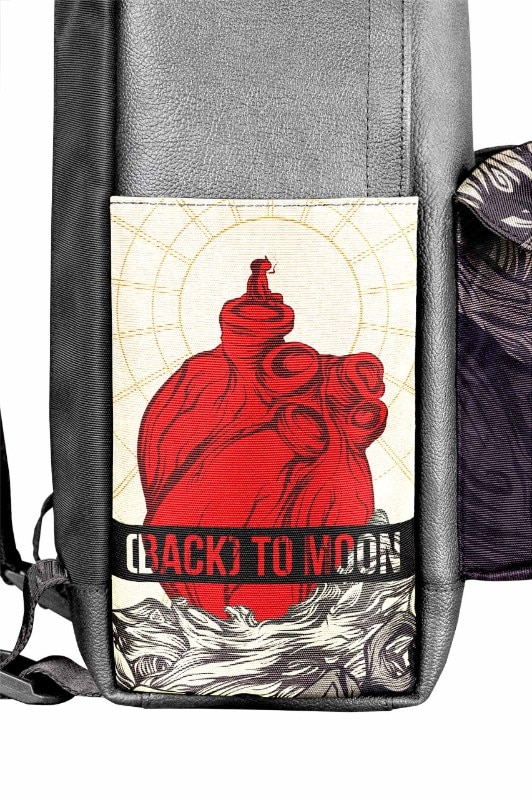
(Back) to Moon’s first backpack is a declaration of intent with sustainability at the heart of the narrative. According to Altieri, most emerging brands today know how to communicate very well, but very few people actually know how to make products. The result is a lot of beautiful empty boxes.
“In order to distance myself from this mode, I referred to the world of utility, with the two front storage pockets and the technical expandable pocket for water bottles or umbrellas”. The rest is a balance between styling and functionality, Altieri explains, returning to the theme of the product that tells the story of a generation, his generation, “in love with the minimalism of Apple products and streetwear style, but with important values that arise from the need to solve the problems of the past generations”.
Artists are a pillar of (Back) to Moon
Graphics appear on the front storage pockets, customising the backpack in many different editions, and make the variations on the theme potentially endless. “We wanted to start with one model and make it iconic”. Therefore, the solution devised by the founders of (Back) to Moon was to develop several variations and release them periodically.
“I thought back to when I used to share my cartoons and illustrations on Instagram”, Altieri continues. “I also had a fair number of followers, a few thousand guys who interacted with me and looked a lot like me”. From there came the idea of involving other creatives in (Back) to Moon. “We only collaborate if there is a complicity”.
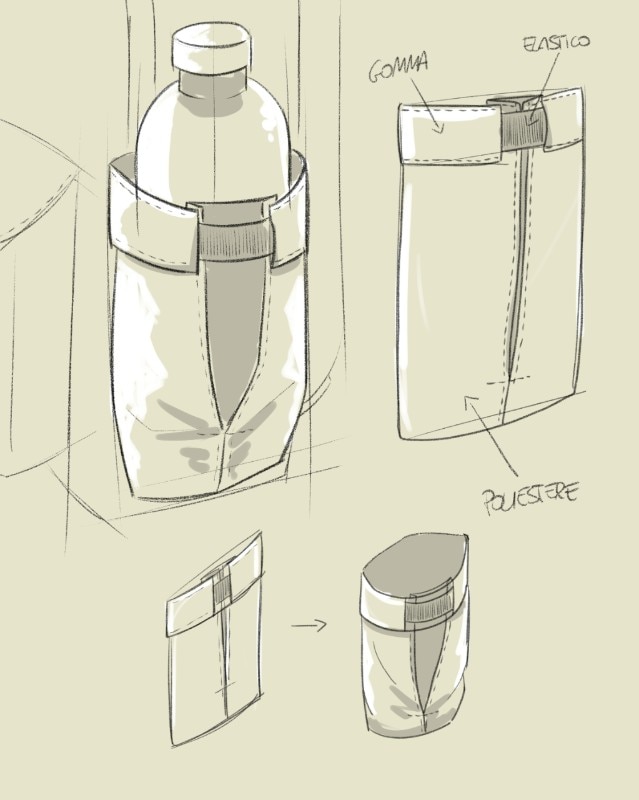
Sublimation printing, he explains, has made this process sustainable for the start-up. “It is a technology that allows us to be very dynamic, there are no minimum quantities to print and the quality is very high”. For the future, the plan is to be a brand based on creatives. “Artists are a pillar of (Back) to Moon”.
The parts on which the graphics are printed are made of polyester obtained from the plastic of bottles. This polyester is “very robust and gives the graphics printed on it an eternal shine”. The accessories are made of recycled polypropylene, more than 85% of which comes from recycled end-of-life household products and packaging. All production takes place in Val Vibrata, Abruzzo, an important, though less celebrated, made in Italy manufacturing area.
“All suppliers are Italian excellences in the production of materials, and you can find them all on our website. We are very keen on transparency in the supply chain”, Anastasi says, who points out that everyone is making it a bit easy today, with big fashion companies launching collections with eco-friendly products. On the positive side, suppliers are adapting to create lines of innovative materials made from waste or recycling, but there is a catch.
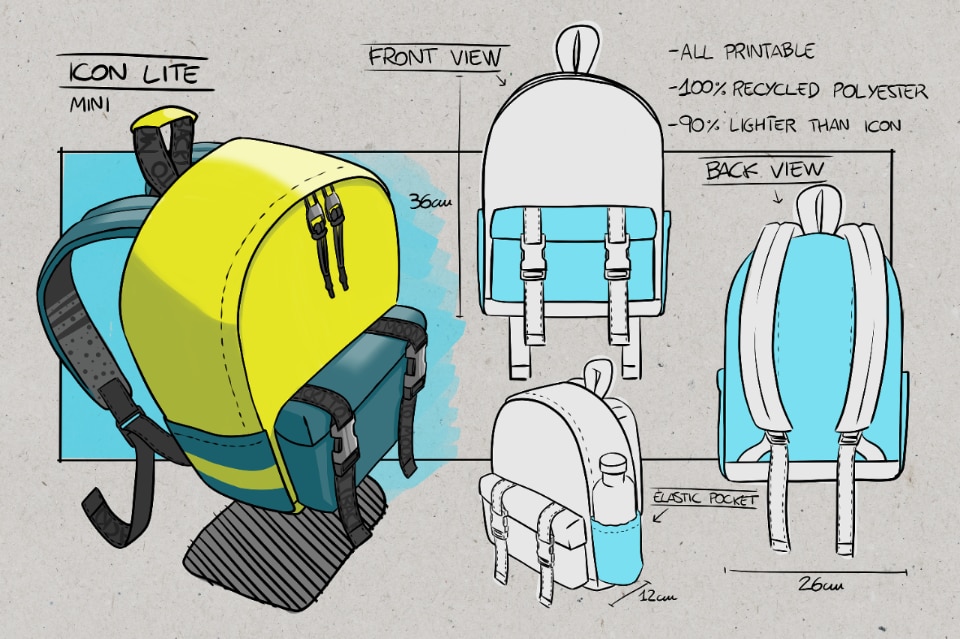
“The problem today is about the strategy: most companies want to increase their profits by producing quickly and at very low prices. This makes it possible to claim eco-sustainability, but it does not make those products truly sustainable, Anastasi continues. According to him, we are in a transition that will lead consumers to be willing to pay more to buy a garment produced in a 100% sustainable way. “If we are not able to change our consumption habits, the sustainability theme in this sector will turn out to be just an icon on the label”.
And the moon? “As good introverts, we are victims of the moon’s fascination and all the symbolism associated with it”, Anastasi and Altieri explain. “We thought of man’s landing on the moon, a conquest belonging to past generations, the same generations that left us a world of environmental debts, social asymmetries and tensions between peoples. Our generation has the potential to create a different world. Once this is done, we could go back to the moon and plant a flag we could be really proud of. With parentheses, also intended as a generational metaphor. “We are immersed in a context, we complete it with our value, but no one reads us”. And in the brand’s future, two new backpacks, a smaller one and a technical one.
La nostra generazione ha il potenziale per creare un mondo diverso

The New Brevo House by Pedrali
Brevo has given its Parisian headquarters, La Maison Brevo, a major makeover, prioritizing innovation and employee well-being for its 400 staff members. The furnishings, curated by Pedrali, transform the 3,000 sq m of interior and exterior space into dynamic, stimulating environments that foster collaboration and diverse work styles.




